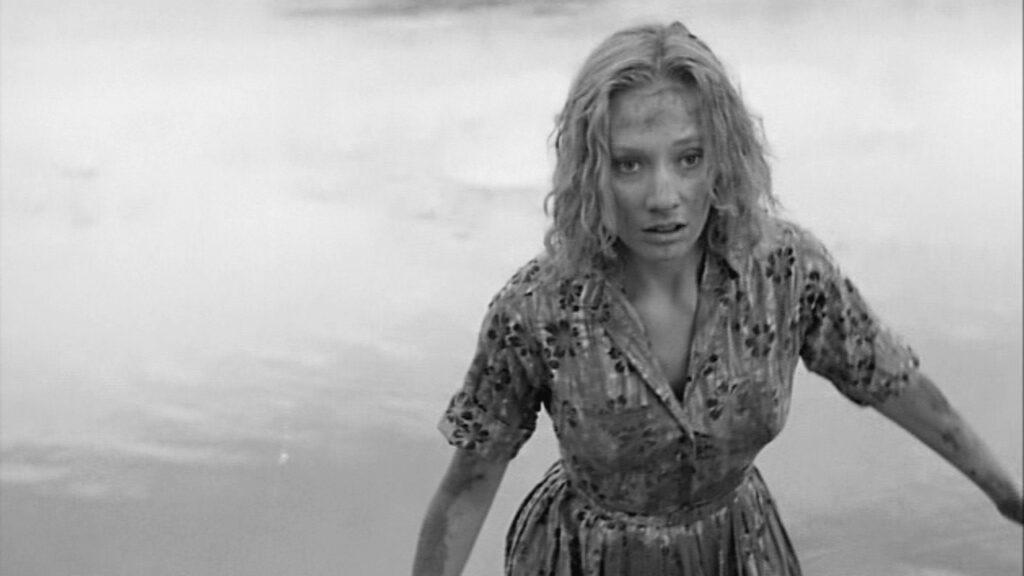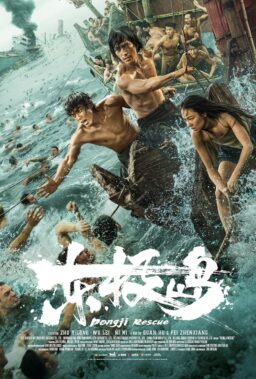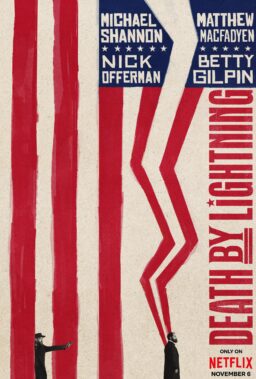Can a masterpiece happen by accident? Herk Harvey’s “Carnival
of Souls,” just released by Criterion
on a gorgeous, 4K-restored Blu-ray, has elements that seem almost accidental.
Reportedly birthed into existence when Harvey spotted the abandoned Saltair
Pavillion in Utah, “Carnival of Souls” certainly didn’t have a production
process that would lead one to believe it would be as influential and beloved as
it is a half-century later. The cast is filled with almost entirely non-actors—other than its pitch-perfect leading lady—most of whom appear to have been
directed to deliver their lines in as practical and deadpan a manner as
possible, leading one to wonder if the ensemble’s overall creepy effect is
intentional or a product of the director’s inexperience. When one looks at the
similar, flat delivery in future industrial films that Harvey would go on to
make, it seems almost a coincidence that the decision here is so effective
(unless those shorts about work safety also include ghosts, which is entirely
possible). Is the ease with which one can read a gender commentary into the
story of “Carnival of Souls” intentional or accidental? Does it matter? And
when one considers that this film sprouted from Kansas and Utah—not exactly
hotbeds of cinematic brilliance—it seems even more like a glorious anomaly.
Whatever back story or intention one reads into “Carnival of Souls,” the film feels more masterful than ever in 2016, so clearly ahead of its time and
eternally powerful.

“Carnival of Souls” is effective from its very first shot,
one that throws us into the middle of the action, disorienting viewers as if we
missed something before the movie even started. It’s a drag race that ends in
tragedy as one of the cars involved goes off a bridge. A woman named Mary Henry
(the incredible Candace Hilligoss) emerges from the water, muddy and shaken.
From the instant we see her, we know something is wrong. How did she survive?
And how does she appear to be injury-free? She seems confused and uncertain,
but Mary heads off to Utah, where she’s been hired as a church organist.
As Mary travels the lonely country, echoes of Marion Crane’s
journey from her past surface (and “Psycho” was released two years earlier). At
this point in history, viewers of “Carnival of Souls” would have also likely
seen the early 1960 episode of “The Twilight Zone” called “The Hitch-Hiker,” in
which Inger Stevens plays a woman traveling from New York City to Los Angeles
who keeps spotting the same man on the side of the road. Of course, in one of
Serling’s most copied twists, the man turns out to be death himself coming for
Adams, who actually died before she began her journey. So, as Mary starts
seeing a ghostly man (played by Harvey) on her trip to Utah, the sense
that something bad has happened and/or will happen to this woman becomes more
palpable.
Harvey is also careful to make the world around Mary
increasingly threatening, largely through the male archetypes he puts in her
way. Most of the people that Mary meets in Utah are men, and most of them want to tell Mary what to do. From the man who tells Mary that he’s not really
a doctor before he offers his advice on how to fix her, to the priest who warns
her about the safety of her soul to the lecherous creep who lives across the
hall, the men in “Carnival of Souls” push and pull at Mary as much as the
ghostly figures who will eventually drag her down. Is “Carnival of Souls” a
commentary on (or even advisory against) what happens to lonely women? One of
the many brilliant elements of Harvey’s work here is how menacing he makes the
world around Mary even when there is no evident threat. The entire world can be
an evident threat to a woman alone. And when the sound around Mary disappears—when
she can no longer hear or be heard by those around her—it could be merely the
cheap effect of a low-budget horror film or a commentary on the ease with which
women can be ignored, especially in the early ‘60s.

If “Psycho” and “The Twilight Zone” pre-date “Carnival of
Souls,” it’s still easy to see its imprint on genre classics to come. The
dead-eyed, white-skinned men and women who assault Mary in the final act look
strikingly like the undead creatures defined by George Romero six years later
in “Night of the Living Dead,” and it’s impossible not to draw lines from
Harvey’s work to Lynch’s in films like “Eraserhead” and “Mulholland Dr.,” and
on TV’s “Twin Peaks,” most of all. Whether or not the terrifying
church-organ-only score is a product of the film’s low budget (reportedly $30k)
or artistic intent, it’s a masterful use of music to enhance mood and another
element of the film that feels ahead of its time.
The Criterion edition of “Carnival of Souls” includes only
the 78-minute version of the film (not the 84-minute director’s cut that had
been available in the past), but offers several effective special features.
Most interesting are a new video essay by David Cairns and an
interview/analysis by comedian/writer Dana Gould, such a fan of the film that
he calls it comfort food. The release also features a documentary on the film’s
cult status called “The Movie That Wouldn’t Die!,” selected-scene audio
commentary featuring director Herk Harvey and screenwriter John Clifford, “The
Carnival Tour” (about the film’s locations), excerpts from Harvey &
Clifford’s industrial films for The Centron Corporation, deleted scenes,
outtakes, an essay by Kier-La Janisse and a history of the Saltair Resort.
Herk Harvey would never make another feature film. Candace
Hilligoss would never become the star she should have become from this
performance. For years, “Carnival of Souls” would essentially disappear, only
being resurrected as a cult item years later (on the new video essay, someone
speaks of seeing it accidentally on late-night TV and not having any idea what
it was, but being absolutely terrified). And yet, like Mary coming out of the
river, it has achieved new life more than 50 years after its release. Why did
it disappear? Why did it resurface? Is it because its themes of being cut off
from the rest of the world still terrify? Is it because its rough edges distinguishes it? We can see in “Carnival of Souls” what
we know and love about other horror films, but it’s distorted like a funhouse
mirror. Harvey’s classic is not quite what we’re used to seeing but never less than terrifying.












